The best sleeping bag liners 2025: added warmth, protection and comfort
The best sleeping bag liners add welcome toastiness to your sleeping bag, as well as shielding it from grime and damage

The best sleeping bag liners can make a huge difference to your backcountry campouts adding extra comfort, warmth and protection to the best 4-season sleeping bags.
Essentially a sleeping bag-sized sack made from a lightweight material, a sleeping bag liner might seem like a luxury you can live without, but many seasoned campers swear by them. Advantages include additional comfort and warmth – perfect to help extend your use of 2-season sleeping bags – plus they protect sleeping bags from dirt, damp and wear and tear – especially great when camping with children.
When choosing a liner, you'll need to consider your planned use. The most obvious consideration is matching it to the shape of your sleeping bag, as liners also come in rectangular or tapered 'mummy' shapes. Some brands only offer one shape, so be sure to double check before you buy.
If you're backpacking, look for a lightweight liner that packs down small and pay attention to the weight. A fleece liner will keep you extra toasty but will also be far heavier and bulkier than a cotton or silk liner.
For more on how to choose the best sleeping bag liner for your adventures, scroll to the bottom of this guide.
The quick list
Here's a brief look at what we regard to be the best sleeping bag liners available in 2025. For a deeper dive into each product, navigate to the more detailed reviews further down this guide.

We love this warm liner that can add an extra season to your sleeping bag setup thanks to its supreme warmth to weight ratio
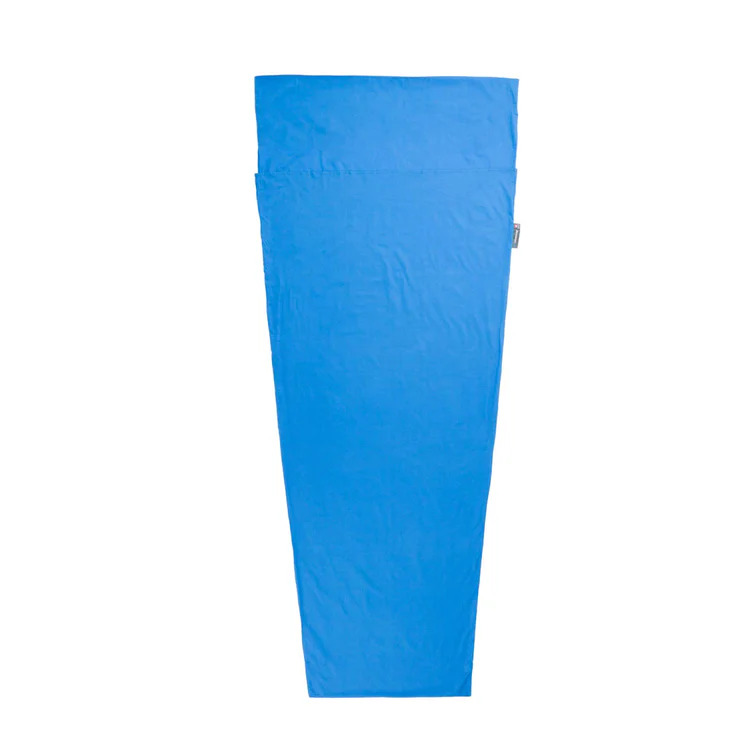
A 100% cotton liner with inbuilt odor control. Not the lightest or the warmest of the liners we've reviewed here, but very versatile. It comes in both rectangle and mummy shapes
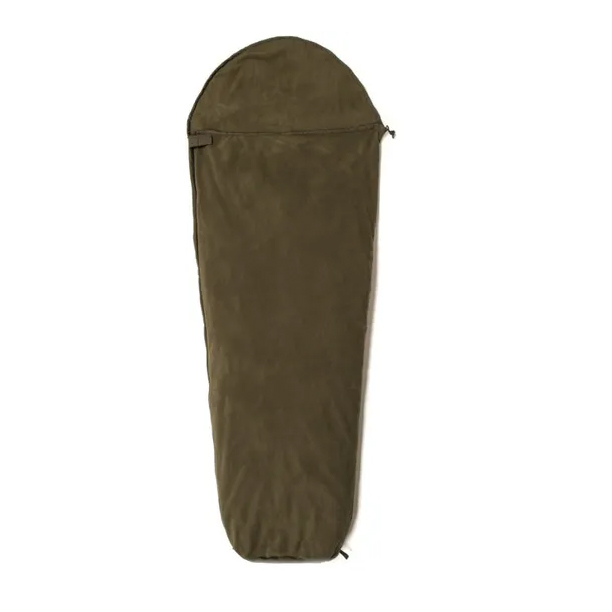
A heavy but pleasingly soft and quick drying fleece liner that’s ideal for bitter nights in fall and winter
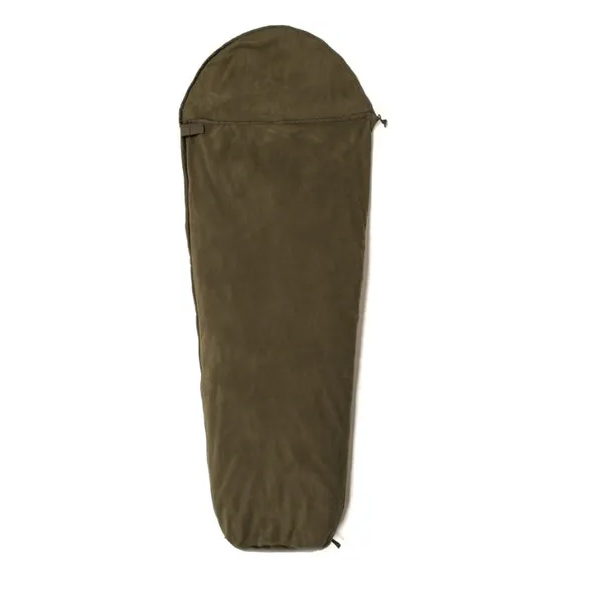
This water-resistant, windproof liner also works well as a standalone bag for hammock camping and it wicks sweat away beautifully

A simple, easy to wash polyester liner that's made from 100 per cent recycled polyster to protect your sleeping bag
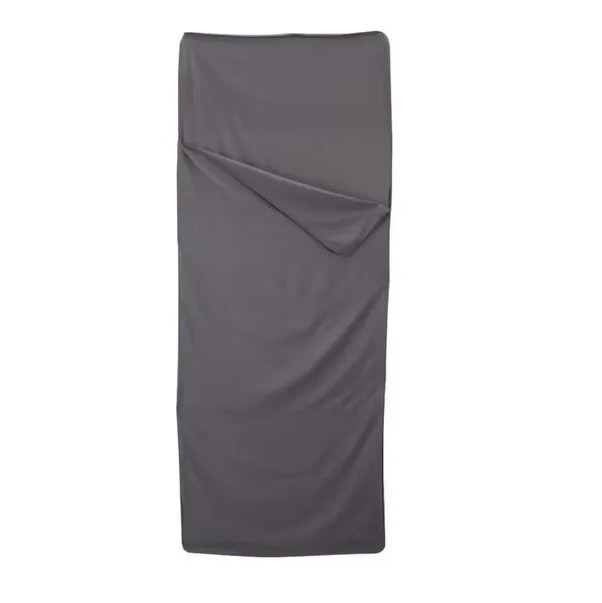
An affordable liner that packs into any rucksack and offers good protection, while also being easy to wash and dry
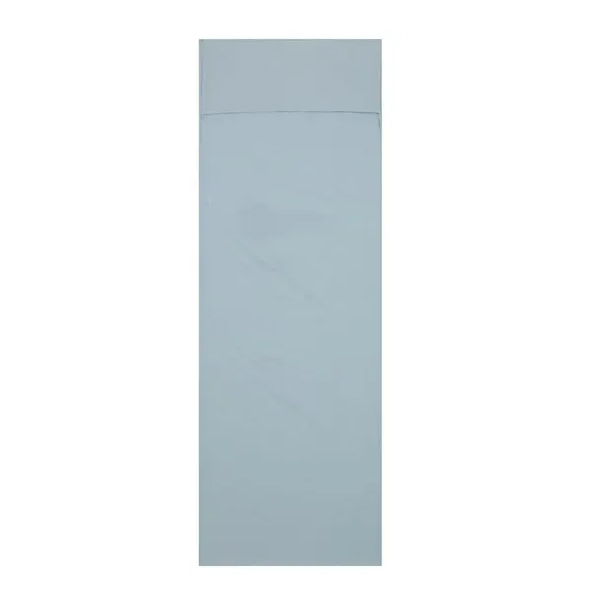
A well-priced and soft-to-touch cotton liner that works well for hot weather and even has a pillow pocket
The best sleeping bag liners we recommend in 2025
You can trust Advnture
The best sleeping bag liner overall
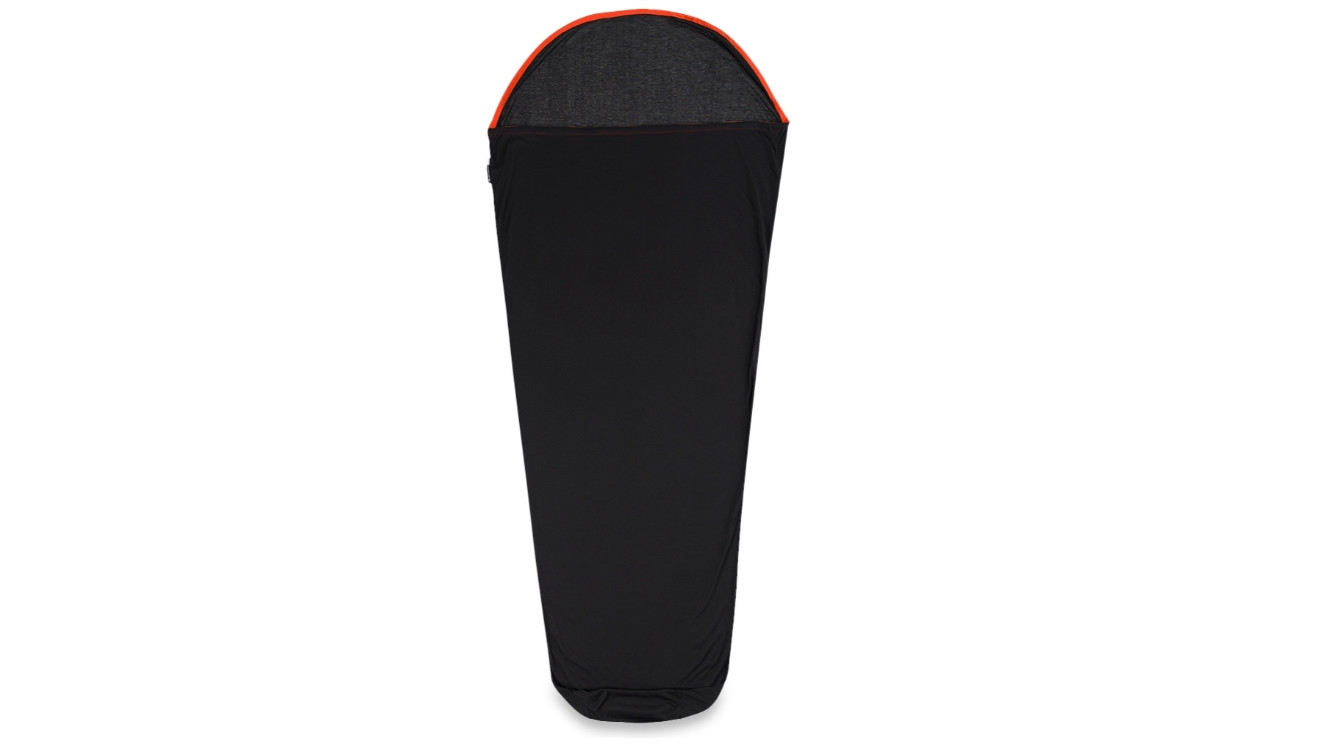
Specifications
Reasons to buy
Reasons to avoid
A lot of sleeping bag liner manufacturers big talk about how much insulation and warmth they can bring to your sleep system, but the Thermolite Reactor was one of few that our tester Sian found that markedly improved how much heat was trapped inside a sleeping bag.
The brand’s bestselling design is made of lightweight, synthetic Thermolite fabric, which traps in body heat fast and "all with the quite luxuriously comfy feeling of fleece against the skin," according to Sian. When coupled with a down sleeping bag, it offers a pretty much guaranteed toasty system for most climes.
Thermolite is also lighter and more packable than fleece. Due to this, you get winter-ready warmth without too much bulk and, weighing in at 248g, very little to carry too.
Need something that offers a bigger hit of heat for cold winter nights? The Reactor Extreme, is an even warmer version claiming to offer a boost of 15°C.
The best sleeping bag liner for versatility

Specifications
Reasons to buy
Reasons to avoid
If you're looking for a reasonably priced liner that can amp up the warmth rating of your sleeping bag in colder months, but still works well on its own when the nights heat up, you should find the Lifeventure Cotton Sleeping Bag Liner a good choice. It comes with an inbuilt pillow sleeve, to stuff with clothes as a head rest if you're travelling light, or stop your camping pillow sliding around on your sleeping pad - one of those irritating issues we often encounter when camping wild.
It's made from 100% cotton that's been treated with Polygiene to keep odor at bay. This means you won't need to wash it as much, reducing its eco footprint. But given the environmental impact of cotton production, we'd still have liked to see organic cotton used instead. It might not be the lightest liner we've featured here, but it packs down well and will easily fit into a large daypack. The Lifeventure liner comes with its own ripstop stuff sack, that rolls and clips shut like a dry bag, and the loop handle means you can hang it off the ground when you're not using it. Make sure you do keep it dry when you're using it, as cotton loses all its thermal properties when damp - the stuff sack doesn't claim to be waterproof, but should help with this at least a bit.
Read our full Lifeventure Cotton Sleeping Bag Liner review
The best sleeping bag liner for warmth

Specifications
Reasons to buy
Reasons to avoid
"Heavy but pleasingly soft and warm, the Snugpak Fleece Liner is ideal for bitter winter nights," says our camping expert Sian. If warmth and comfort is top of your sleeping bag liner shopping list, try Snugpak’s luxuriously soft offering for size.
This fleece liner is deliciously cosy to climb into after a long day’s hiking, traps in body heat quickly and is still breathable if you do get hot in the night. Reviwer Sian also loved the full-length zip for easy access – a far cry from some of the liners she tested, which she had to really wiggle about to clamber into.
A warm liner usually equals a weighty liner and this is no exception, weighing in at 1kg. Put into context, this design weighs more than twice some lightweight sleeping bags. However, if intend to you camp throughout the year and fancy giving winter glamping a go or want to add warmth to your chilly camper van, this fleece liner is well worth it.
Our reviewer Sian also sees the potential of this liner as a standalone piece, saying: "I found the reassuringly thick and soft fleece also made this a nice standalone sleeping bag for chillier summer nights when you still want a bit of weight over you."
Read our full Snugpak Fleece Liner review
The best sleeping bag liner for water-resistance
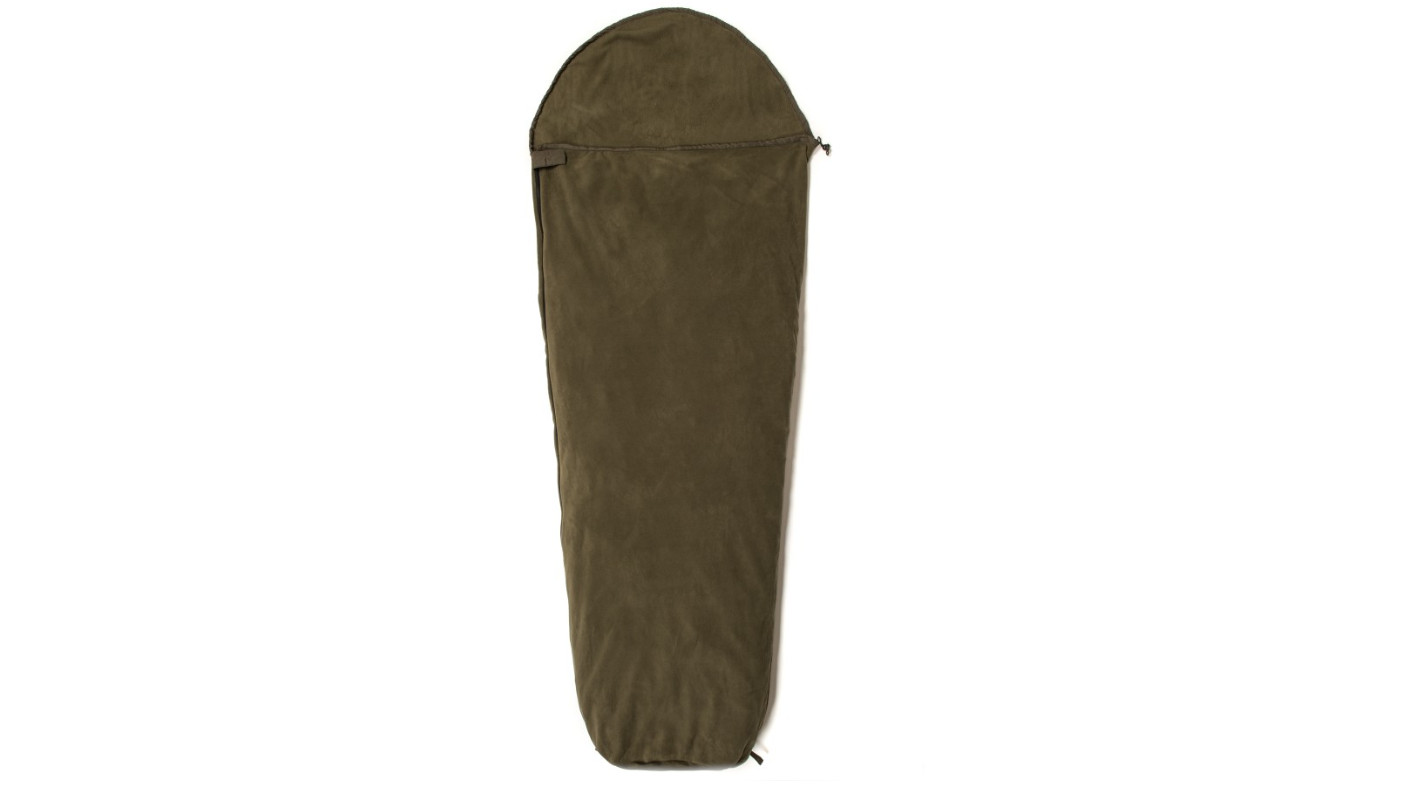
Specifications
Reasons to buy
Reasons to avoid
If you're looking for something to shield your premium bag, kepping it in tip top conditions, this may well be the answer. Snugpak’s Paratex liner is all about protection. It’s designed to wick moisture away from the body, thus keeping you dry without affecting your precious bag’s lining. As is often the case with sleeping bag liners, it's straightforward to launder too.
Sian, our expert teser, found this liner also worked well as a standalone lightweight sleeping bag, too. This is because the outer material is water-resistant and windproof, making it ideal for balmy summer nights bivvying or spent in a hammock. In these cases, you won't require much warmth but some protection in case the weather turns while you’re asleep is obviously valuable.
Sian admitted that she "tended to slip and slide a bit in this silky-feeling liner." She recommended that "if this bothers you, pick a fleece or cotton liner instead. "
Read our full Snugpak Paratex Liner review
The best sleeping bag liner for eco-credentials
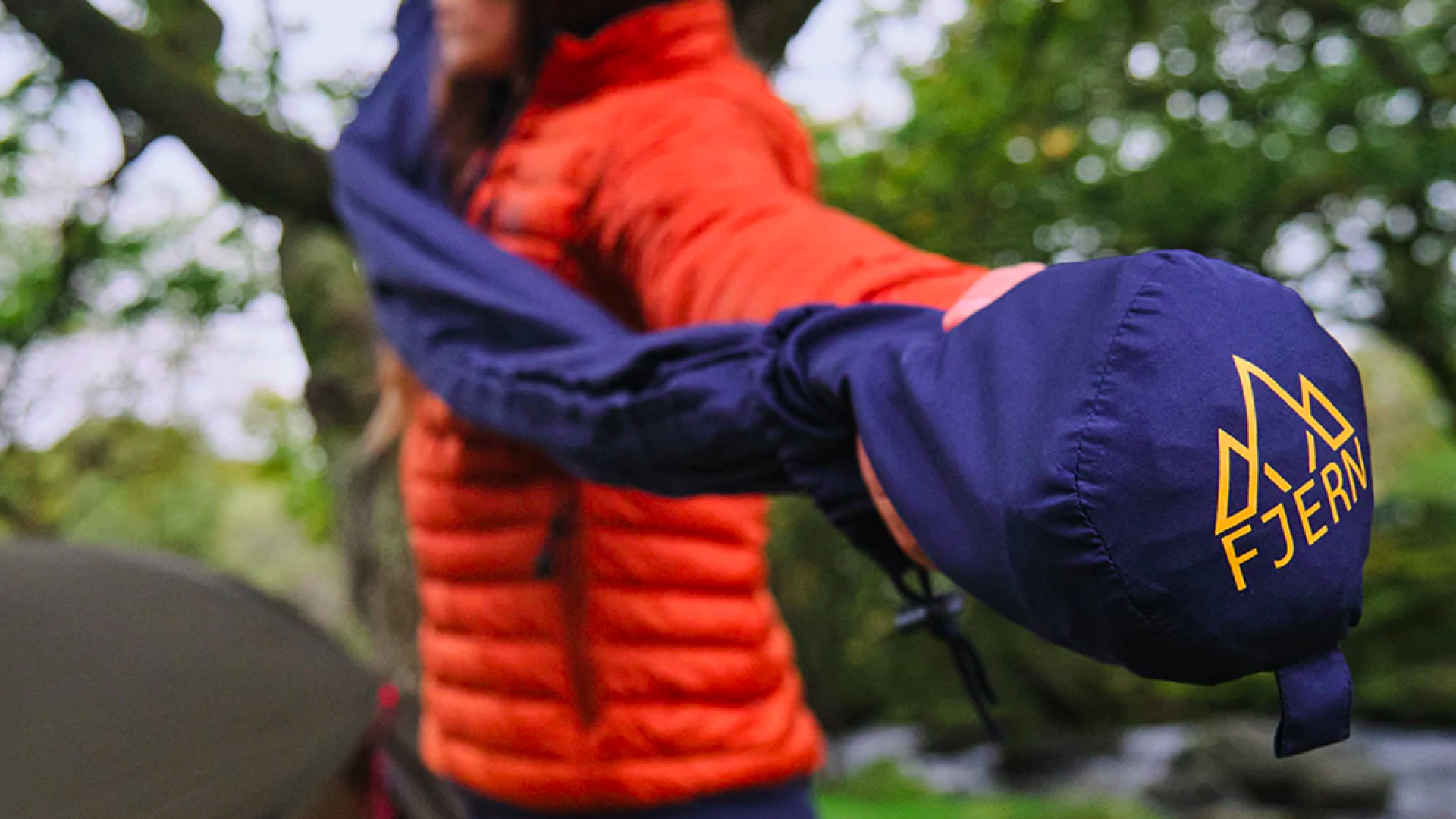
Specifications
Reasons to buy
Reasons to avoid
This bright liner (our reviewer Sian tested the orange version) is a solid choice for cooler camping conditions in spring and fall, or for use as an additional layer during winter stays in hostels or mountain huts. Its polyester material traps in warmth nicely, making it ideal for such scenarios.
However, in hot or humid conditions, the polyester isn’t breathable enough to be comfortable. A cotton or silk liner does the job better for these kind of adventures. According to Sian, the "liner also does a great job of protecting your bag from dirt and sweat, and once you’re back home, it comes out of the washing machine as good as new, and dries fast."
The majority of the liners Sian tested weren't made from recycled materials. However, the Slumra features 100 per cent recycled polyester, making it a more sustainable choice than most. It's also a decent option for backpacking trips and hut-to-hut hikes, thanks to its low, 340g weight.
Read our full Fjern Slumra Liner review
The best sleeping bag liner for value

Specifications
Reasons to buy
Reasons to avoid
"The cheap and cheerful Decathlon Polyester Liner packs easily into any rucksack and offers good protection for your sleeping bag," says Sian, our expert tester. It's perfect for casual camping, school or scout adventures, or if you were looking to try out a sleeping bag liner without making a larger investment.
Its a simple liner that fits well into rectangular sleeping bags and offers good protection. As ever, it's also super easy to removed and launder. It also adds a fair degree of insulations, making it a solid option for spring and fall nights. However, the downside is that polyester isn’t particularly breathable, so it'd be easy to overheat on hot nights.
It weighs in at a respectably light 260g and packs down small enough to fit nicely into a daypack. Sian enjoyed using it for hut to hut hiking and shorter wild camping weekends in cooler weather where her priority was keeping her sleeping bag clean and in good condition. She reckons it's hard to argue with Decathlon's assertion that this represents great value.
Read our full Decathlon Polyester Liner review
The best sleeping bag liner for festivals
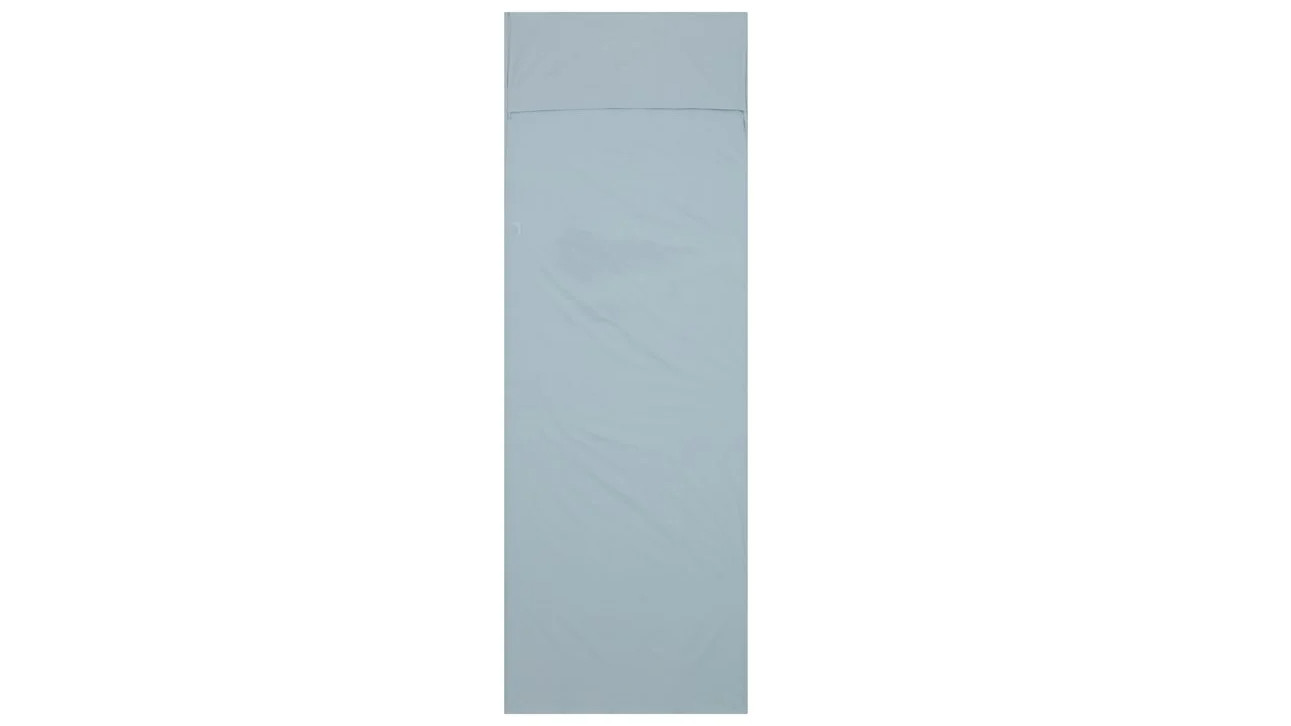
Specifications
Reasons to buy
Reasons to avoid
Summer, camping and the backcountry go together like mac 'n' cheese – this is, until you overheat in your stuffy three-season sleeping bag. On warmer nights under canvas, this lightweight and breathable liner is a good option.
It's made from Polycotton, a mix of cotton and polyester. In this case, it's 35 per cent cotton, 65 per cent polyester, offering a good balance between the softness and moisture-wicking properties of cotton and the added durability of polyester.
"This simple but quite thin-feeling rectangular bag is a good choice for tropical travelling, festivals and more casual summer camps," says Sian, our expert tester. It also launders easily and dries quickly when back home.
A sewn-in pillow pocket is great for keeping a camping pillow in place all night if you're the kind of person who tosses and turns in your sleeping bag. The design is a little bit snug to slide into, so taller or bigger campers may want to choose a liner with a more generous width.
Read our full Mountain Warehouse sleeping bag liner review
The best sleeping bag liners comparison table
Sleeping bag liner | List price | Weight | Material |
|---|---|---|---|
Sea To Summit Thermolite Reactor Liner | $63 (US) / £50 (UK) | 248g / 9oz | Thermolite |
Lifeventure Cotton Sleeping Bag Liner & pillow sleeve | $35 (US) / £27 (UK) | 360g / 12.7oz | Cotton |
Snugpak Fleece Liner | $60 (US) / £38 (UK) | 1kg / 2lb 3.3oz | Fleece |
Snugpak Paratex Liner | $39 (US) / £32 (UK) | 200g / 7oz | Paratex |
Fjern Slumra Liner | $38 (US) / £30 (UK) | 340g / 12oz | Recycled polyester |
Decathlon Polyester Liner | $12.99 (US) / £7.99 (UK) | 260g / 9oz | Polyester |
Mountain Warehouse Liner | $25 (US) / £19.99 (UK) | 360g / 12.7oz | Polycotton |
How we test the best sleeping bag liners
Our expert reviewers test all sleeping bag liners by heading out into the hills and moors in all kinds of conditions, setting up camp and spending several nights in them. We have paired each of the bags featured here with an appropriate sleeping bag (i.e. one with a temperature rating that suits the season and temperature at the time, or one which is slightly less warm than the conditions call for if used without a liner) and then assessed the product performance.
Specific features (including weight, size, comfort, packability and thermal performance) are tested against claims made by the brand, and we assess factors such as durability, environmental impact and value for money
For more details, see how Advnture tests products.
What is the point of a sleeping bag liner?
You may be wondering whether sleeping bag liners are worth it. There are several advantages to having a sleeping bag liner and very few disadvantages. Lets get the latter out of the way, as it's pretty quick. The main cons are that it's one more thing to pack and you have to invest in one. However, some are so lightweight and packable that you'll barely notice it and we'd also argue that in the long run, it's an investment that will pay itself back – just read our first point below.
So, let's get into the pros:
1) A sleeping bag liner provides a protective shield around the inside of your sleeping bag. A sleeping bag can be a very expensive purchase, yet the very nature of camping or backpacking means we often end up getting in these precious cocoons while being more than just a little grimey. You simply don't want all that dirt, sweat, body oil, sun cream and the rest on your pricey sleeping bag. An affordable liner will add years and years to the lifespans of your prized sleeping bags.
2) A sleeping bag liner is easy to launder. Unlike a sleeping bag, which is a faff to clean at the best of times, not to mention the fact that the process reduces the performance of its insulated fill, sleeping bag liners are usually machine washable.
3) A sleeping bag liner provides additional warmth. This is particularly pertinent for you winter campers, as you need all the help you can get to stay toasty! It's worth noting that fleece liners add more warmth than silk ones.
4) A sleeping bag liner tends to be more comfortable against the skin than a sleeping bag's inner fabric. For maximum comfort on your camping trips, a liner is a no brainer.
5) A sleeping bag liner is a standalone option in warm weather. Yes, it's not just additional warmth in winter that the best sleeping bag liners are good for, they're also great for balmy summer nights. Rather than having to haul your bulkier sleeping bag around, you can simply bring you lightweight and ultra-packable liner.
How to choose the best sleeping bag liners
Not all sleeping bag liners are created equally. You’ll find plenty of different materials and shapes on the market, but our handy guide and frequently asked questions below will help you pinpoint the best sleeping bag liner for you. Whichever design you choose, liners tend to be compact and affordable (our recommended liners start from just $13 / £8), so we reckon they’re a bit of a must for camping adventures – but consider the following factors…
Packed size
Have a think about where and how you plan to use your new sleeping bag liner before you invest in a shiny new one.
First up, pack size: if you’re going wild camping or usually only camp for a weekend at a time, small, lightweight models that pack into a backpack or a bike pannier are your best bet. If your idea of a good camping holiday is full bells and whistles in a campsite or a glamping tent, you can pick a heavier, warmer but bulkier liner. Likewise, if you want a warm fleece liner for winter, you may need to pick a liner with a larger pack size but which offers that much-needed added heat.
Weight
Second, weight: some silk liners weigh a smidge above 100g, so they’re ideal for weight-watching fastpackers. Thick fleece liners can weigh 1kg – more than some sleeping bags – so they’re better for car campers and winter weekend camps.
Make a decision on what weight suits your setup before you shop – or you could even invest in a few different liners.

Breathability
The breathability of your liner will depend on the material it's made from. Silk is lightweight and wonderfully breathable, while polyester is cheaper but not quite as strong in the breathability stakes. For those looking for warmth and breathability, fleece is a good option, though it's obviously not as smooth on the skin as silk. Decisions, decisions. For more on the materials that sleeping bag liners are made from, scroll further down.
Heat rating
Just as sleeping bags have temperature ratings, so to do sleeping bag liners. Every liner is different and it's worth paying attention to the product packaging and reviews for this. A good liner can add anything from 5°F to 25°F of warmth to your sleeping system.
Anecdotally, silk sleeping bag liners don't add much warmth to a sleep system, whereas users tend to really notice the difference with fleece and Thermolite liners. So, if adding warmth is
FAQs about sleeping bag liners
What materials are sleeping bag liners made from?
You’ll find liners on the market made from all kinds of material. The priciest is silk, which is brilliant for camping as it’s lightweight and feels great against the skin. Silk also offers the best protection from mosquitoes and other biting nasties too, so it’s a good choice for nights in hot tropical countries.
Cotton and polycotton are ideal for summer weather, as they are highly breathable, and brushed cotton also feels rather like your favorite duvet would, so it’s nice if you’re sick of the feel of your plasticky sleeping bag – but remember: cotton offers no thermal protection if it gets wet and can be dangerous in alpine scenarios as a result.
Polyester is affordable and does trap in warmth, but doesn’t breathe well at all, so it’s best used in spring and fall rather than hot or humid conditions.
Winter campers should pick a warm fleece liner – it’s often the bulkiest material on offer but traps in warmth quickly while still being breathable, soft and quick to dry if you pop it in the wash.
What is the best shape for a sleeping bag liner?
Liners come in rectangular or tapered ‘mummy’ shapes, just like sleeping bags. Mummy shapes offer less range of movement but are usually warmer, while rectangular bags and liners offer more room to toss and turn but tend to trap in less heat. Shopping for the right-sized sleeping bag liner is easy: just pick a liner that matches the shape of your favorite sleeping bag.
How do I clean a sleeping bag liner?
Cleaning a sleeping bag liner is very easy indeed. In fact, it's one of the main benefits of having a liner, as it's much more straightforward to launder and dry than a sleeping bag.
Sleeping bag liners can be laundered at home using a standard washing machine and detergent. In terms of settings, use a gentle or delicate wash cycle to avoid damaging the liner and, as with most technical outdoor gear, don't use fabric conditioner, as it will have an adverse effect on its moisture wicking properties.
Similarly, avoid using a tumble drier, as this will also compromise the fabric's performance. Simply hang the liner out to air dry.
All the latest inspiration, tips and guides to help you plan your next Advnture!
An award-winning travel and outdoors journalist, presenter and blogger, Sian regularly writes for The Independent, Evening Standard, BBC Countryfile, Coast, Outdoor Enthusiast and Sunday Times Travel. Life as a hiking, camping, wild-swimming adventure-writer has taken her around the world, exploring Bolivian jungles, kayaking in Greenland, diving with turtles in Australia, climbing mountains in Africa and, in Thailand, learning the hard way that peeing on a jellyfish sting doesn’t help. Her blog, thegirloutdoors.co.uk, champions accessible adventures.
- Jessie Leong
- Pat KinsellaAdvnture Consulting Editor

